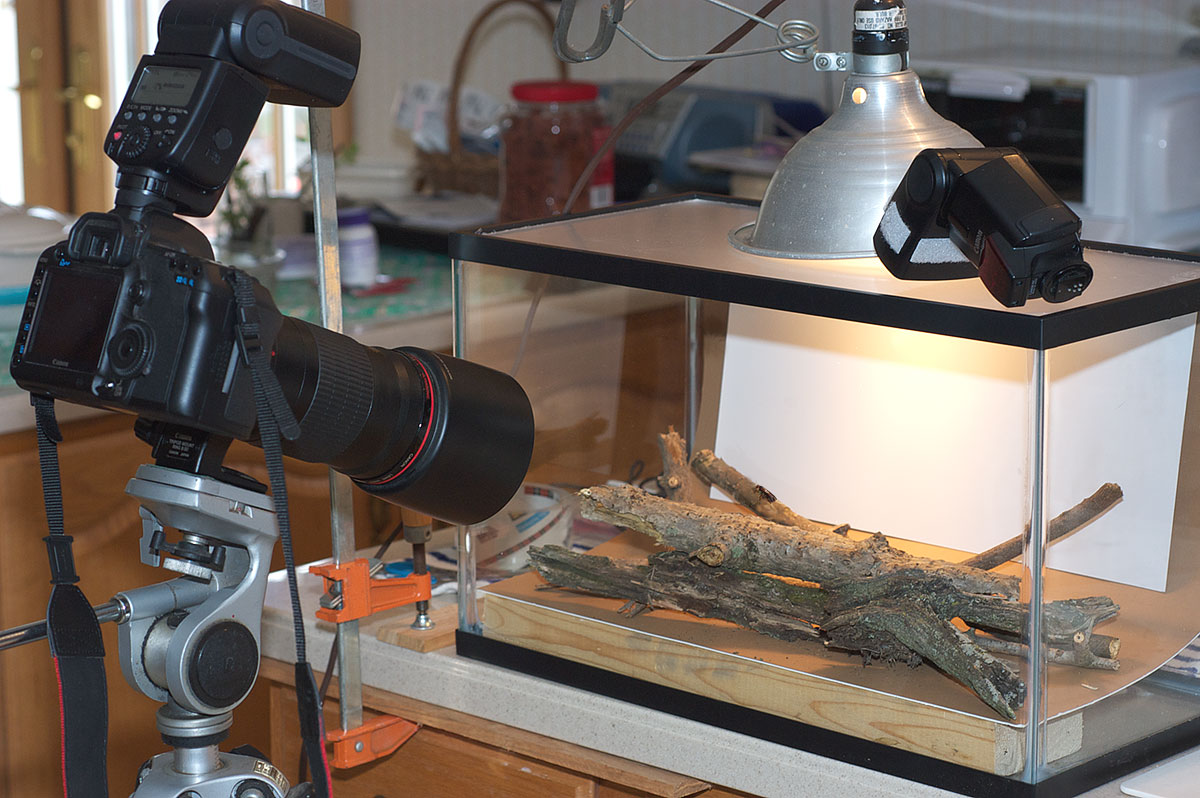
| Primordial Light: Phylum Arthropoda | |||
|
|||
| I photograph Arthropods in the wild (in situ) whenever I can. But it sometimes impossible to photograph them the wild. Here is one of my portrait setups for captive animals. Please note that in the making of photographs of captive animals the flash was not on the camera as depicted here; it was on a remote cable, positioned against the glass to avoid reflections. | ||
 |
||
| Polistes annularis, Paper Wasp, March 24, 2011 (Captive) |
| I found this wasp outside in the cold late in the afternoon of 23 March. It was barely able to crawl and it did not look like it would survive the night, which was going down into the 20’s F. After a night in the warm portrait studio and some sips of water the animal was quite lively, and getting him into position for a portrait required considerable patience. Canon 5D Mk II, Canon 180mm macro lens, two Canon 583 EX Speedlites in master/slave configuration. |
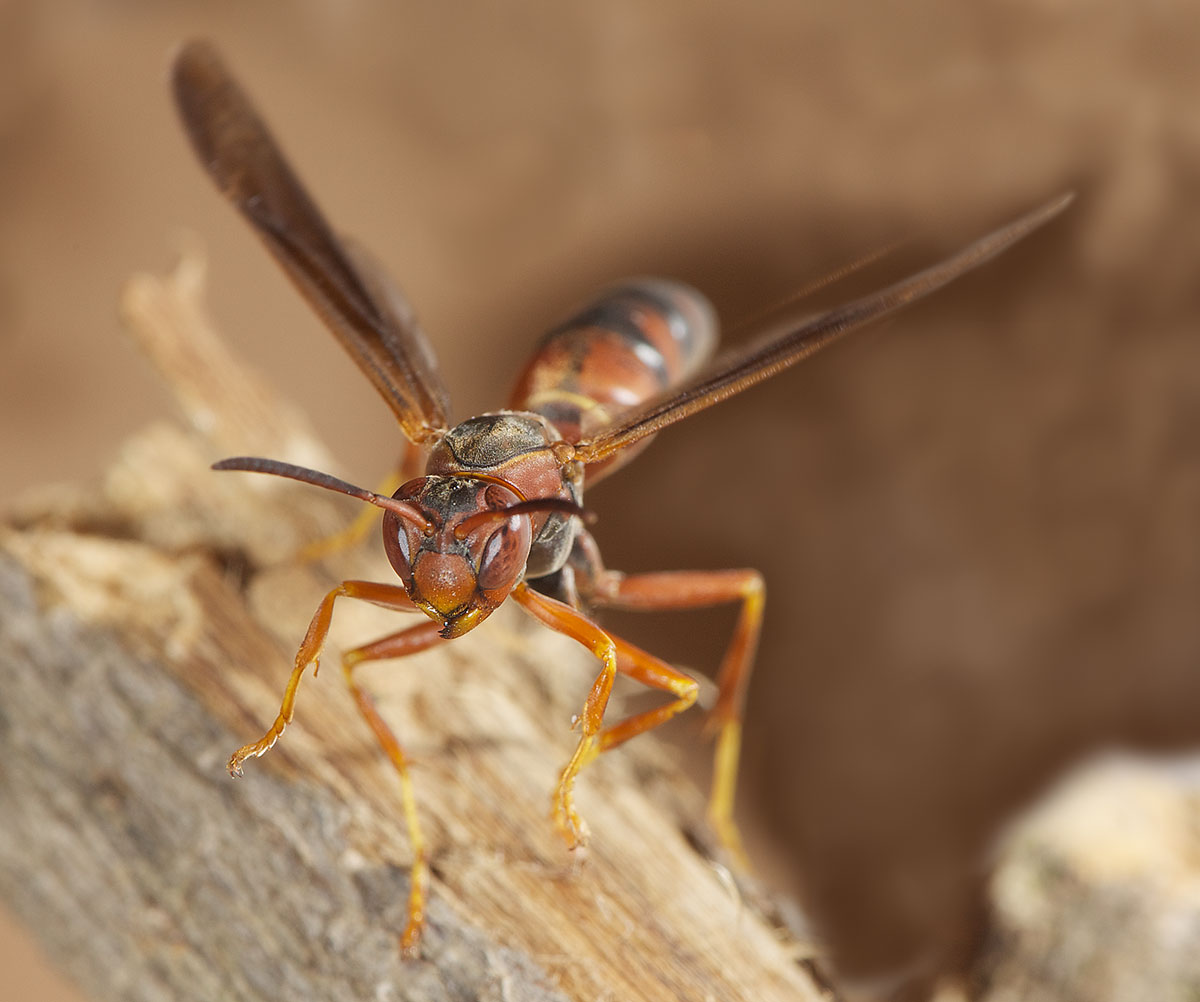 |
| Polistes annularis, Paper Wasp, March 16, 2011 (Captive) | ||
| This is not a face that a mother could love; this wasp is a carnivore (look at the powerful, serrated mandibles, which are suitable for tearing apart small arthropods) and it would eat its own mother if it had the opportunity. This is a different individual to the one above, captured in the same way. These photos reveal that, in addition to the wasp’s two large compound eyes, it has three ocelli, or simple eyes, on top of its head. I released both animals unharmed after photographing them. As ferocious as this animal appears, it is worth noting that many wasp species are not very aggressive; it takes quite a bit of provocation to get them to sting. Still, caution is urged when working with wasps, both in the wild (where they may swarm) or in captivity. Wasps, hornets, and bees (below) are members of Order Hymenoptera. The word derives from the Greek humen, membrane, and ptera, wing: i.e., an insect with membranous, or thin and transparent wings. See the bee wings below. | ||
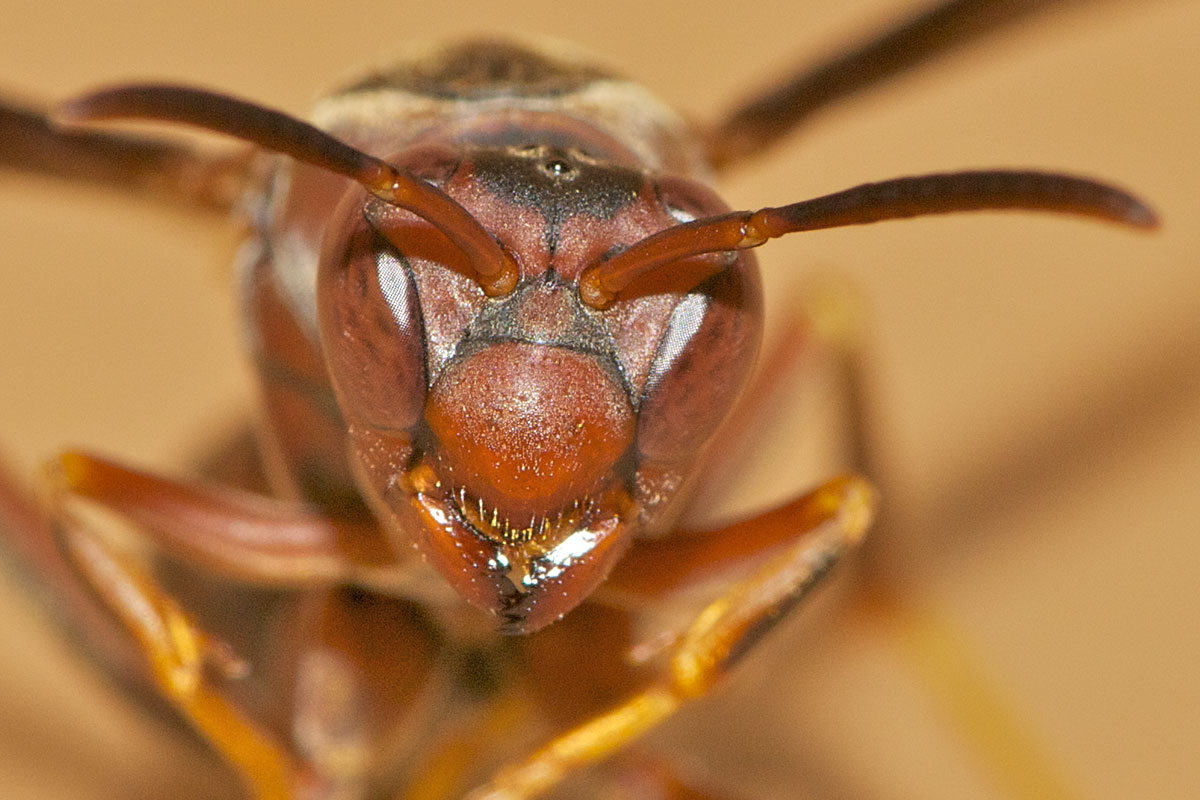 |
||
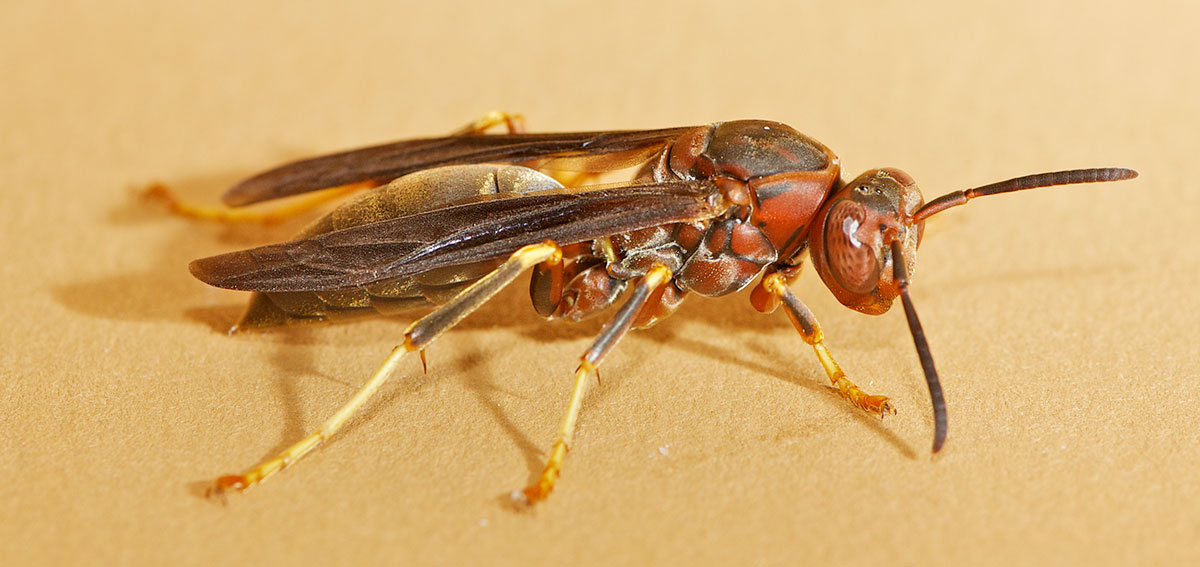 |
||
| Bombus sp., Bumblebee, on a Black-Eyed Susan: A Study in Yellow and Black. | ||
| I made this photo several years ago with a Nikon D100 DSLR and a 60 mm AF Micro Nikkor (closeup) lens. I still use this camera and lens. | ||
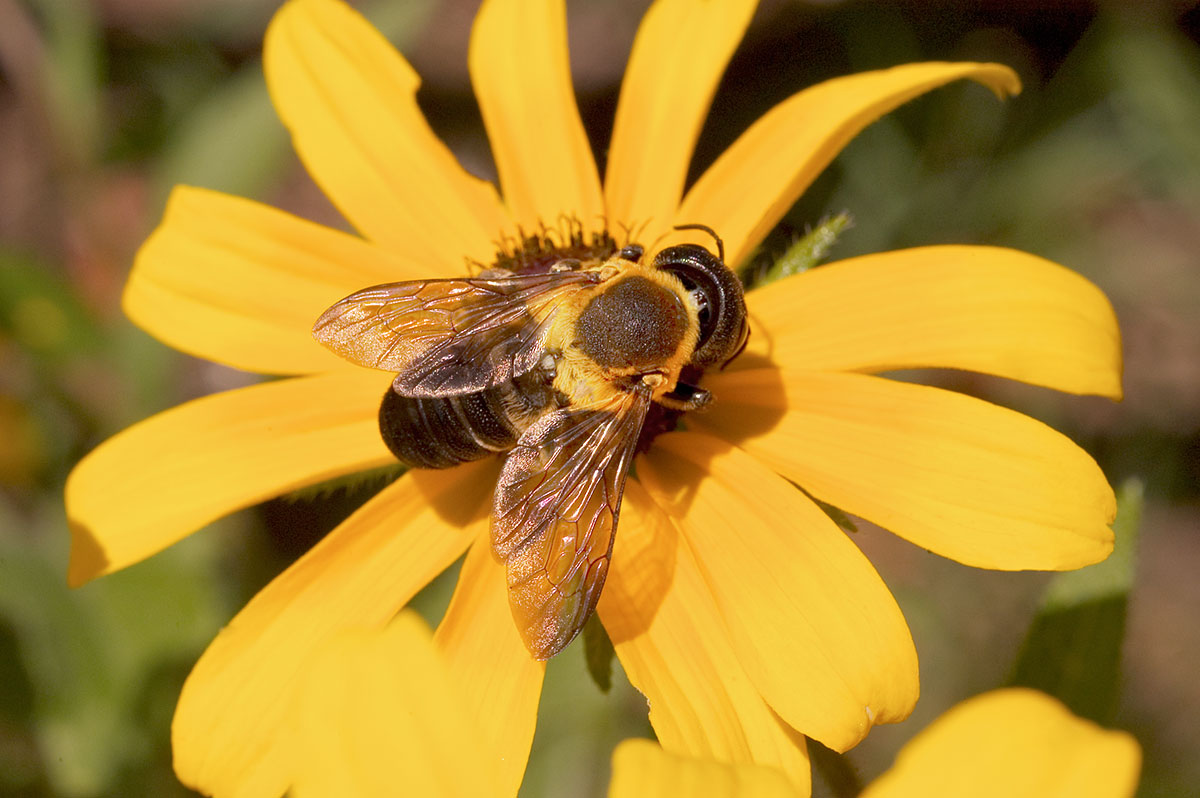 |
| Bombus sp., Bumblebee, on a Hibiscus syriacus | ||
| Bees are of the order Hymenoptera. Evolution gave bees a job to do—pollinate flowers—and a paycheck in the form of nectar to eat. Arthropods and plants have co-evolved, sometimes as coöperators as with this animal, sometimes as adversaries. | ||
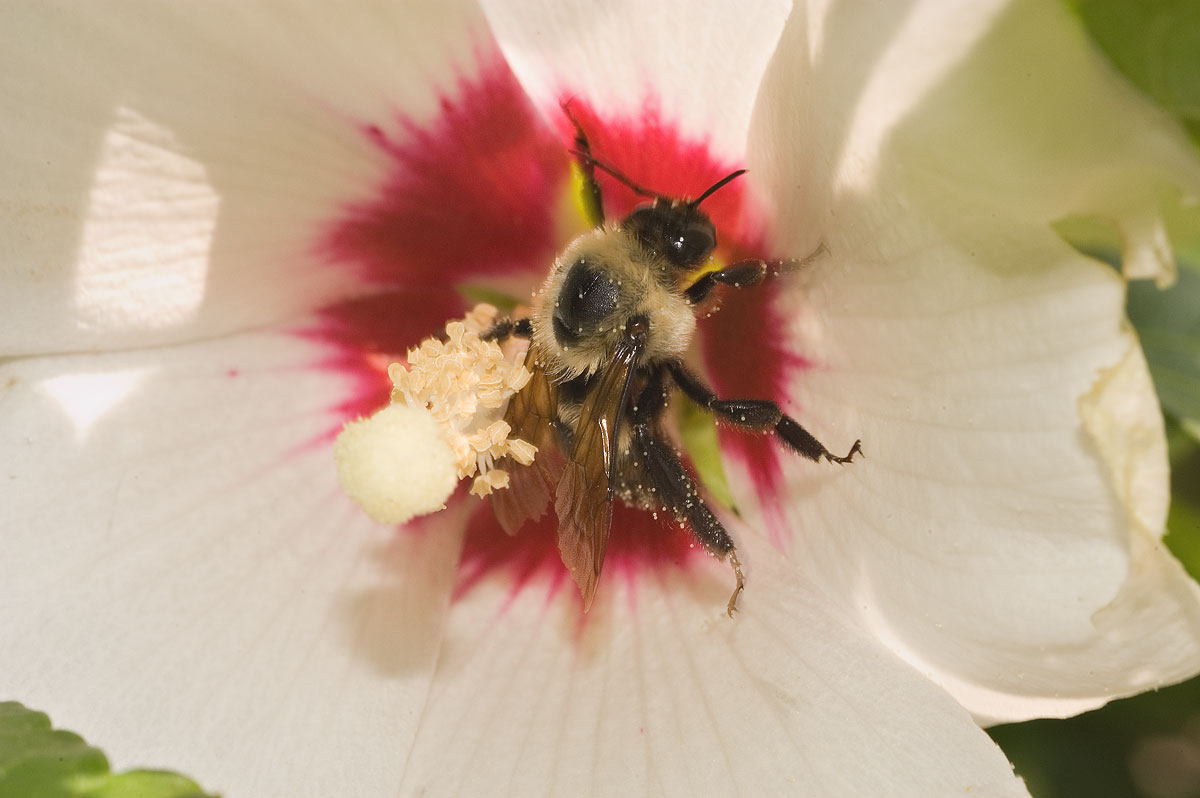 |
||
| Phalangium opiliones, Harvestman or Daddy Long Legs | ||
| The harvestman belongs to class Arachnida like the spiders, but it is of the Order Opiliones, and it is not a spider. Spiders belong to Order Araneae. The harvestman has eight legs like the spiders, but it has no silk gland and no venom. Thus it has no hollow fangs for injecting venom into prey. Instead its chelicerae (fang analogs) are adapted to holding other small arthropods while it eats them. I discovered a few years ago that harvestmen also like to eat my black raspberries! You should not attempt to pick up a harvestman because it is a very fragile animal and is easily injured. If you know what you are doing you may be able to put your hand palm down in front of the animal and entice it to walk onto the back of your hand for close-up study. Look closely at the legs, as they are a marvel of evolution. If you do handle a harvestman you will want to wash your hands afterwards, as harvestmen are just one of a myriad of arthropods that emit a pungent smelling chemical for defensive purposes. The fossil evidence reveals that the harvestman has not changed substantially in form in 400 million years. That’s a wonderful example of getting it right the first time! I think that the harvestman is one of the most beautiful and fascinating of all the small creatures. I encountered this individual on an antique brick wall in Colonial Williamsburg a few years ago. | ||
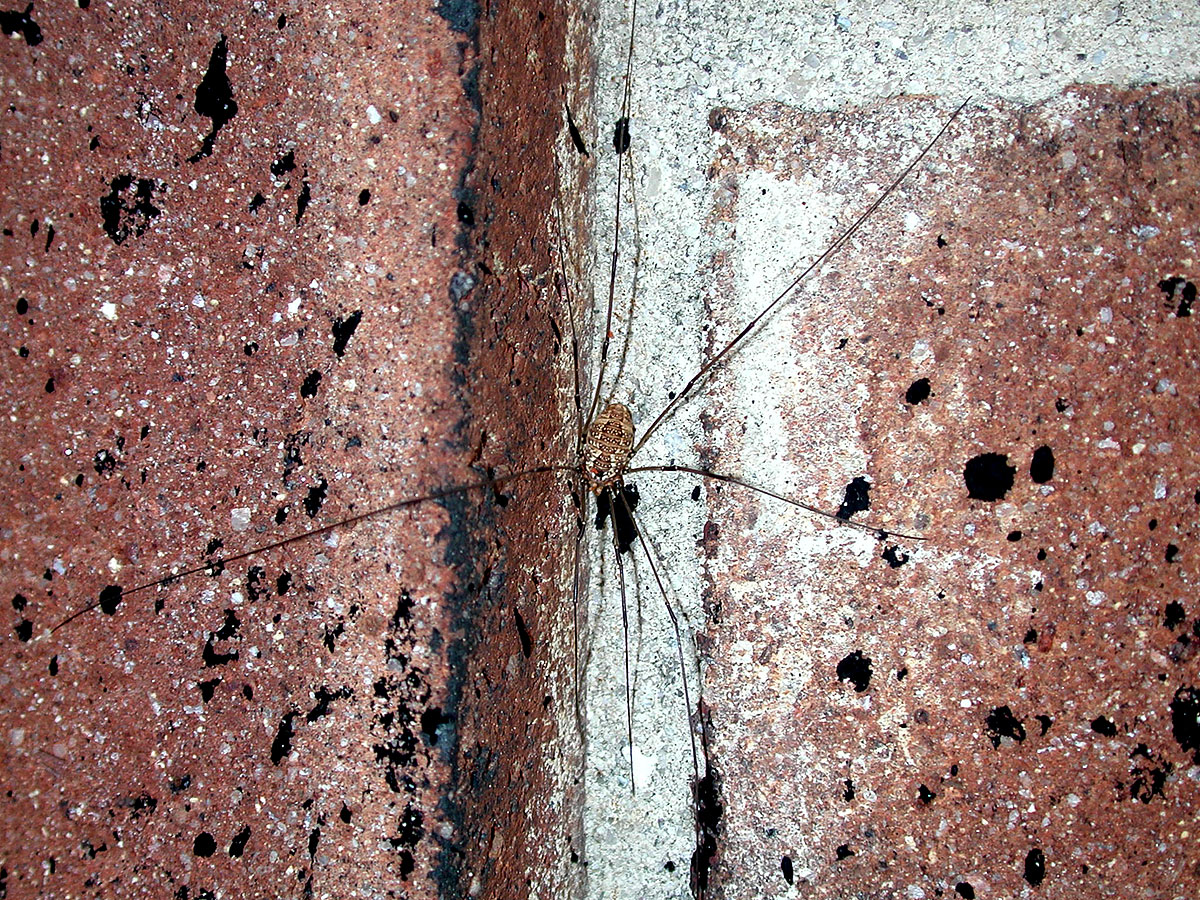 |
||
| Strophopteryx fasciata, Early Brown, or Mottled, Stonefly | ||
| Stonefly, cranefly, dragonfly, damselfly—if the name is one word it is not a true fly. Compare house fly, horse fly, tse-tse fly. The true flies belong to Order Diptera. The eating habits of the adult stonefly are not known; it is possible that they do not eat at all. They are typically attracted to light-colored walls. I photographed this one in the wild on the “wood-grained” vinyl siding of our garden shed. Canon 5D Mk II, 180 mm macro lens, indirect flash via a Canon 580 EX Speedlite with a softening reflector. | ||
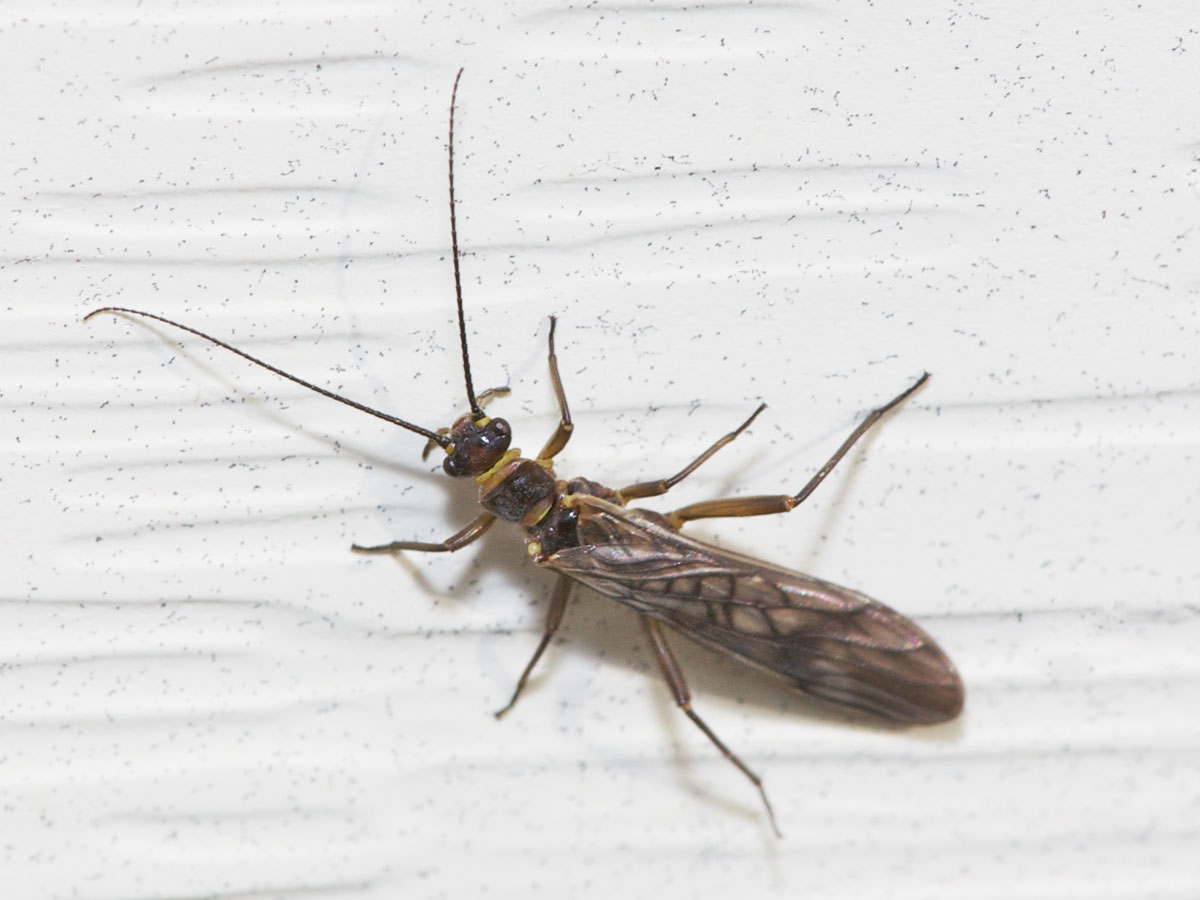 |
||
|
|||
|
|||
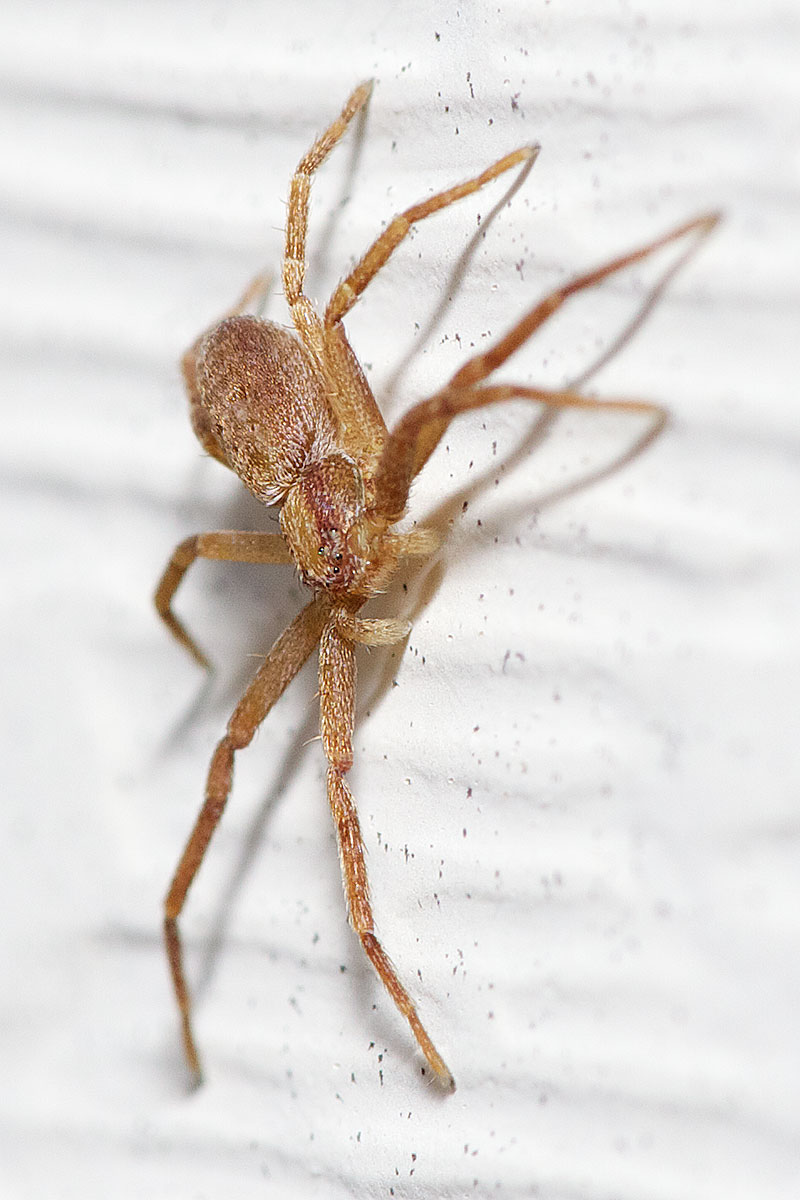 |
|||
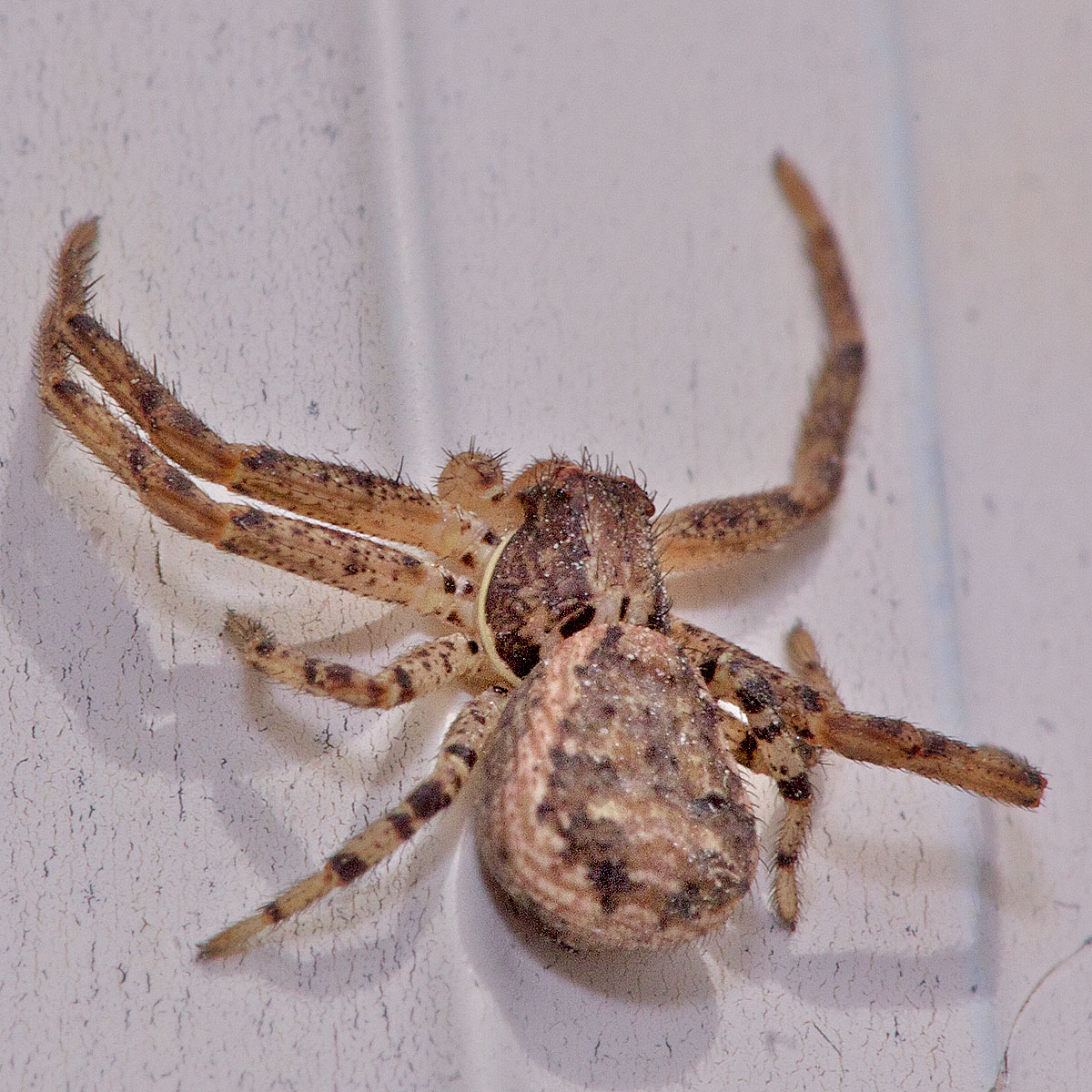 |
|||
“Not by the hairs of my chinny chin chin!” |
|||
| Halyomorpha halys, Brown Marmorated Stink Bug | ||
| This is not the same species of stink bug that you may have known as a child. This important agricultural pest is native to China and first appeared in the United States in the vicinity of Allentown, Pennsylvania, in the late 1990’s. It has spread to Maryland, among other places, where it is doing serious damage to fruit crops. I killed this specimen after photographing it. | ||
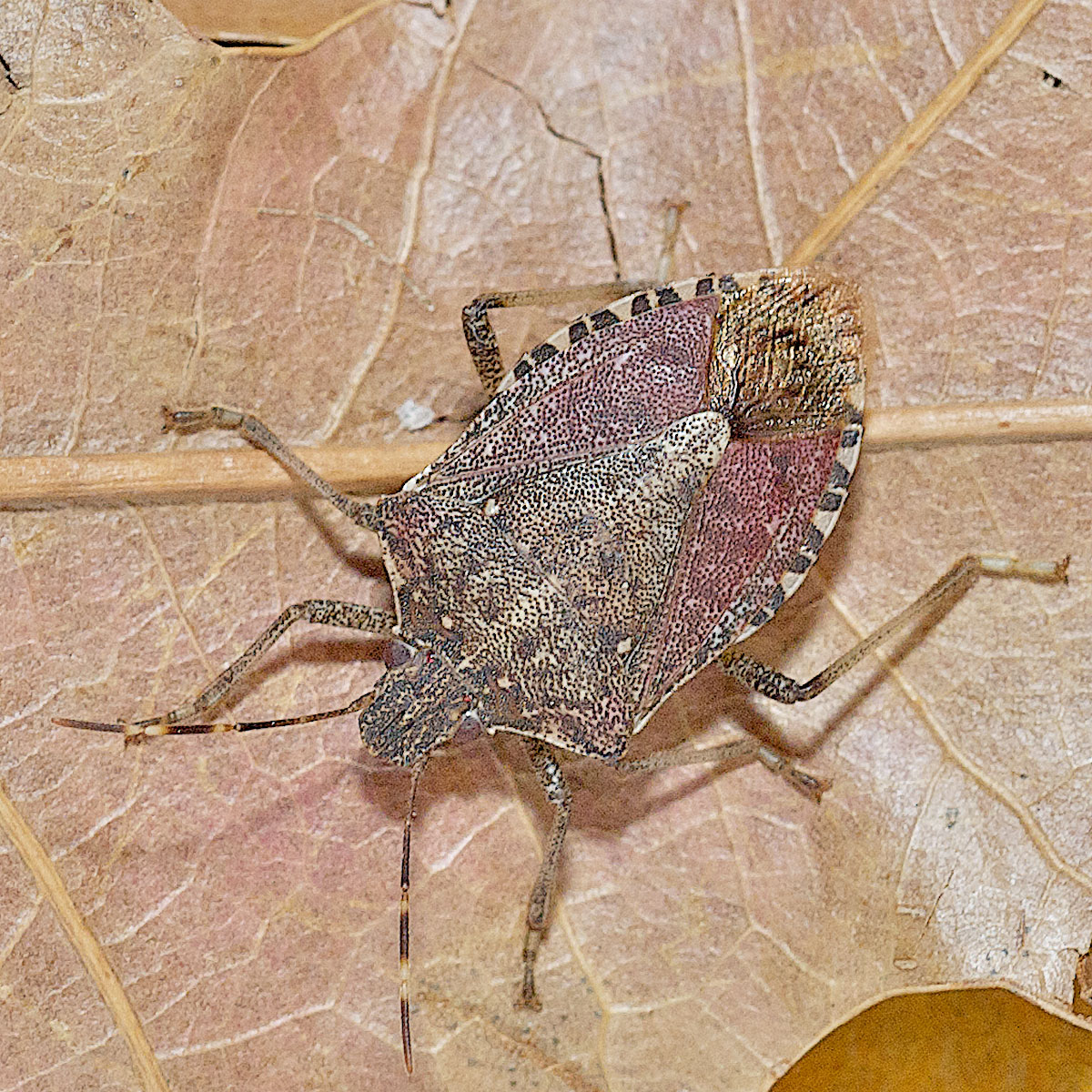 |
||
Above is the dorsal, or back view. Below is the ventral, or underside view. In the ventral view we see that the animal keeps its long, fruit-piercing proboscis folded under him to protect it from damage. The reddish region under the tip of the proboscis is the stink gland. The stink bug’s malodor is very reminiscent of a herb that I dislike very much. I investigated, talking to an entomologist at the University of Maryland, College Park, and I was right; some of the molecules produced by the brown marmorated stink bug are chemically similar to the molecules that give coriander (known in snooty restaurants as cilantro) the odor and taste that I find so offensive. |
||
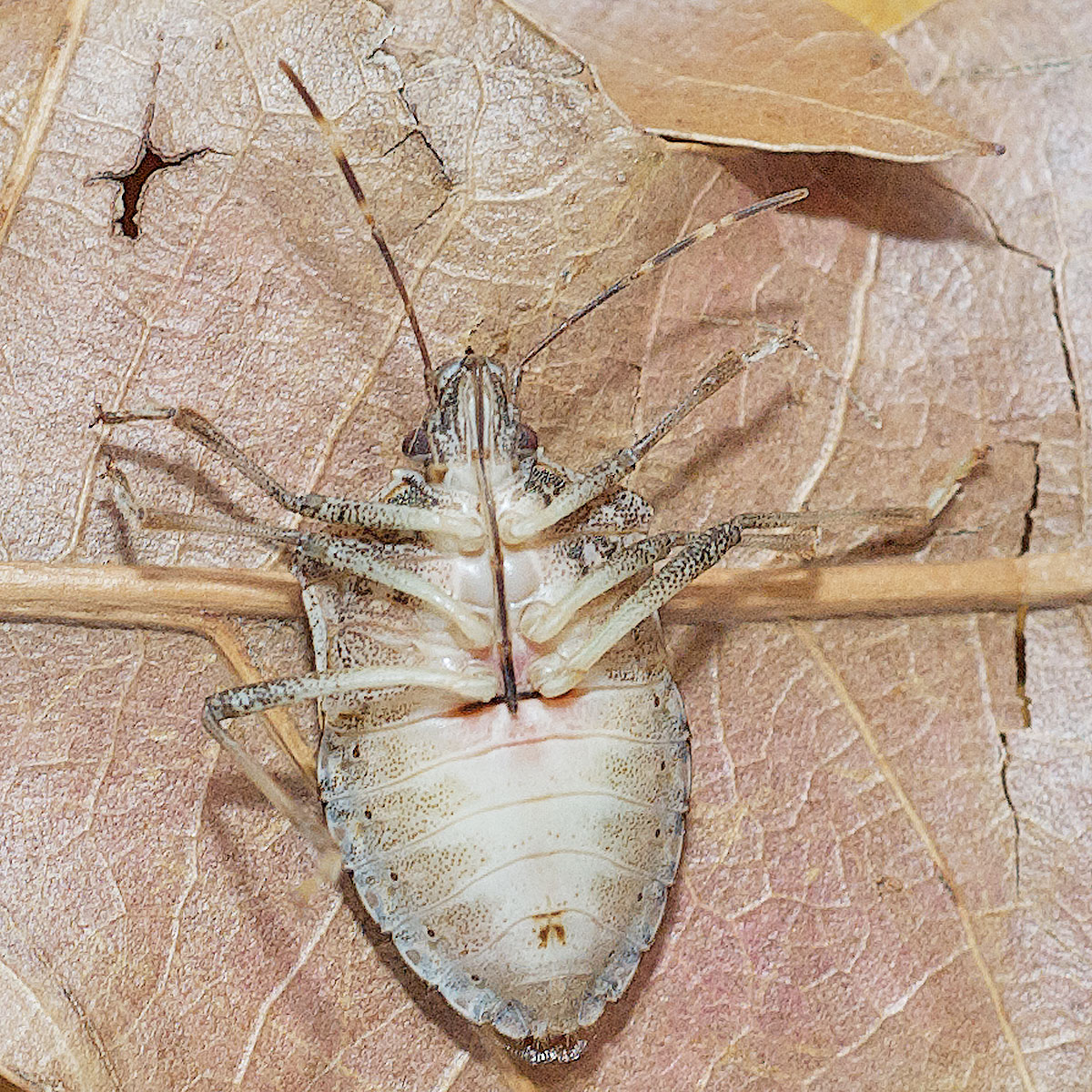 |
||
| Trichtiotinis affinis, Flower Beetle, and Unidentified Ant Species on Queen Anne’s Lace | ||
| The flower beetle, which is a type of scarab, and the ants both eat the nectar of Queen Anne’s lace. The two species seem to get along; there is even an ant on the flower beetle’s leg. Queen Anne’s lace is one of my favorite “weeds” and I do not cut it down. You can tell from its aroma that it is a member of the carrot family. The “carrot” root is thin and woody and inedible. I know this because I attempted to eat one. | ||
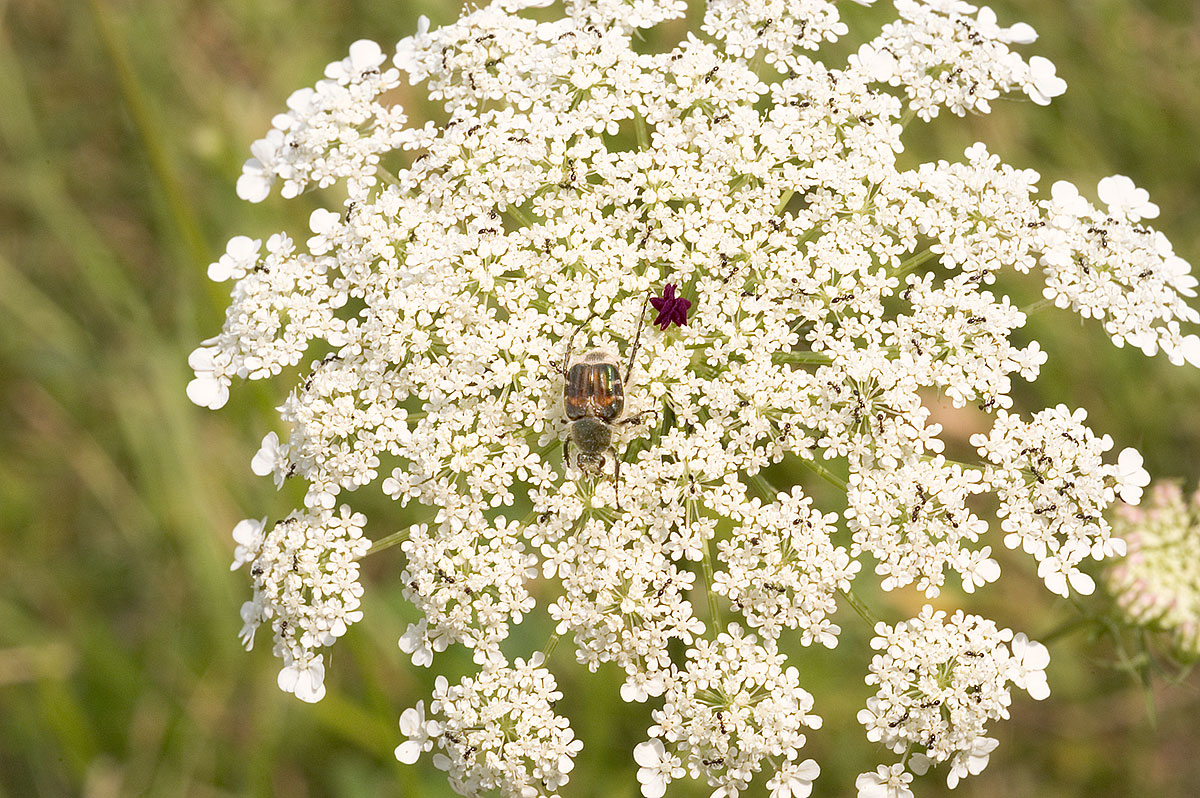 |
||
| Hoverfly, or syrphid fly, Family Syrphidae, on an Easter Lily | ||
| Here is another example of an evolved coöperative relationship: pollination in return for nectar. | ||
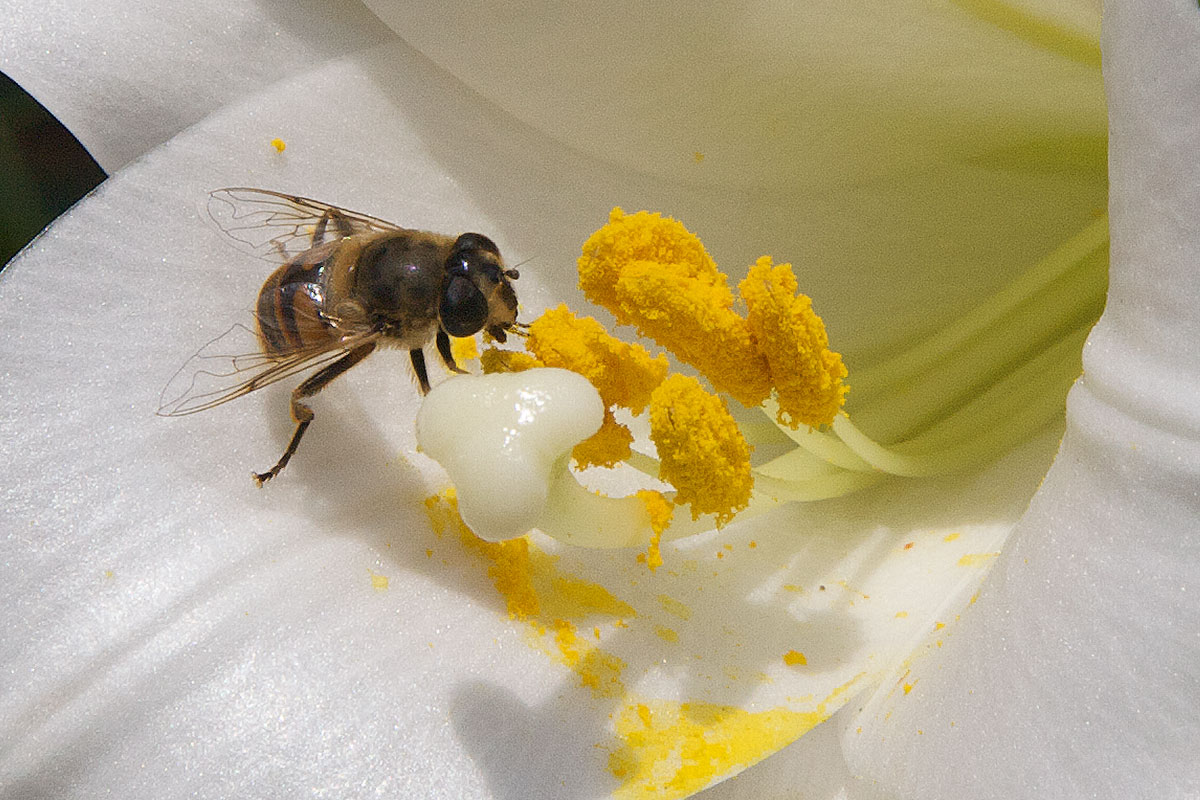 |
||